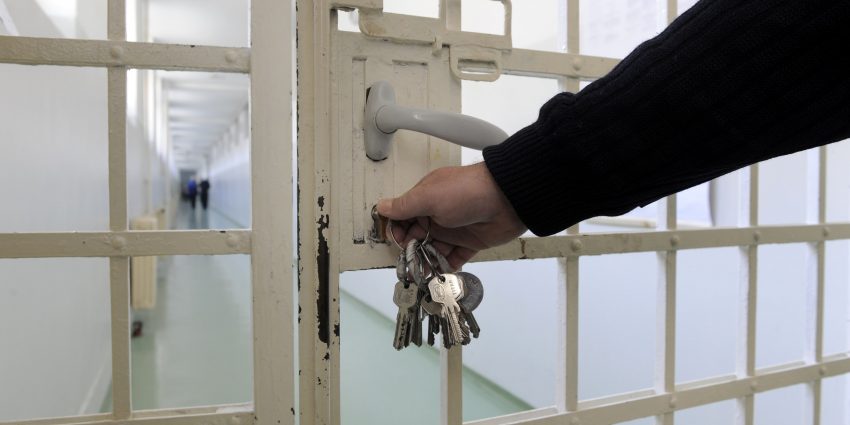Post Views: 2,811
ViewsThe Pandemonium of PANDAS: An Unprecedented Pediatric Disorder
Written By: Melanie S. Weiss, RNC-MNN, BSN
Not to be confused with the black and white bears at the zoo, this is an entirely different ‘animal.’ PANDAS, though pronounced like the bear, is an acronym for Pediatric Autoimmune Neuropsychiatric Disorder Associated with Streptococcus. This disorder wreaks havoc on the unfortunate children who develop it and their unsuspecting families.
PANDAS is a physical disorder with mental symptoms. Typically, it first appears as a virtually overnight dramatic transformation of the child, resulting in sudden terror, significant regression in behavior, and severe anxiety. The child does not know what has ‘hit’ him or her, and so is rightfully in a state of panic. The symptoms are so sudden and dramatic that parents are left with paralyzing fear themselves. They will then rush from doctor to doctor to try to find out what has happened, but will usually leave as bewildered as when they had first entered.
Most physicians are not well-educated about PANDAS. It is a relatively new disorder, only first recognized in 1998. Physicians may have heard of it, but because it is considered to be a rare disorder, and in the absence of elevated strep titres, they will quickly dismiss it as a probable diagnosis. That’s if they even obtain antistreptolysin-O (ASO) & anti-DNase-B strep titres from the child. As more time passes, the strep may become intracellular, therefore the blood titres will ultimately be negative. In some cases, parents will be referred to a psychiatrist or neurologist for further evaluation, but many will more than likely be left to figure things out on their own. In other cases, parents may be blessed with a pediatrician who will dig further, perform blood work, and help obtain a proper diagnosis. Unfortunately, this seems to be the exception and not the rule.
PANDAS has been a controversial diagnosis among the medical community, but it is beginning to earn the credibility it deserves. Widespread knowledge of its existence is necessary because so many children around the globe suffer for too long. However, there is help for PANDAS sufferers and potentially a cure.
The Progression of PANDAS
The intense anxiety experienced by these children is quickly followed by the development of the obsessive-compulsive disorder (OCD) and/or tics or Tourette’s Syndrome (TS). Their whole world is turned upside down. They are suddenly behaving in ways they never did before and the child is well aware of it.
As if this isn’t enough to bear, it is accompanied by age regression, bedwetting, deterioration of math and/or handwriting skills, separation anxiety, and a myriad of peculiarities that continue to evolve. The child will cling to a parent, typically the mother, following them from room to room and refrain from going to school. The child also tends to experience stomach aches and headaches.
Anorexia can become a serious issue as the child is fearful of eating food, either from fear of choking or from an irrational fear about the food and what might happen if they eat it. Obsessive thoughts are paramount, leading to compulsions and possibly tics. The typical profile of a child with PANDAS is that he or she is intelligent, articulate, and considered a good student. Children are initially affected by this disorder from three years of age to puberty.
How do PANDAS occur?
The child contracts group A Beta-hemolytic streptococcus (GABHS) bacteria or strep throat. The antibodies that would typically fight this infection turn on the host, prompting an autoimmune response. The antibodies, in turn, attack the basal ganglia of the brain causing inflammation. This is essentially a form of encephalitis, whereby the blood-brain barrier is left extremely vulnerable, hence the OCD, tics, headaches, and unusual behaviors.
The nature of PANDAS is that symptoms wax and wane. However, whenever the child is exposed to any new organism, there can be an exacerbation in symptoms as the antibodies go to work in their dysfunctional manner. This disorder actually mimics rheumatic heart disease, where a strep infection initiates an attack on the heart muscle which can result in heart valve damage and Syndenham’s Chorea or St. Vitus Dance, a movement disorder.
New findings suggest that streptococcus may not be the only culprit. This would also explain why some children do not present with elevated strep titres. Instead, a child may have elevated mycoplasma or Lyme (flagella-related) titres, for instance. Researchers have recently adopted the umbrella term PANS, an acronym for Pediatric Acute-onset Neuropsychiatric Syndrome, which includes PANDAS but also reflects other potentially responsible organisms. Viruses and parasites are also under the umbrella of PANS.
Medical Interventions
Prompt treatment with antibiotics can quickly reverse this disorder. Without prompt treatment, long-term sequelae may result, leading to the immune system and cognitive decline. Azithromycin and Augmentin have shown promise in helping to curb symptoms to some degree. These antibiotics will obviously help prevent any new bacterial infection, with the former more beneficial for mycoplasma and the latter more beneficial for strep. It is believed these antibiotics possess neuroprotective (anti-inflammatory) properties over the basal ganglia. However, if not used promptly and chronic illness ensues, antibiotic use must be long-term and dosage must be increased for a period of time with any new exposure or sometimes dental work needs to be done. Since known exposure is not always the case, the increased symptoms serve as a telltale sign. Selective Serotonin Reuptake Inhibitors (SSRIs) have been used to help reduce symptoms, although dosage must start low and be increased slowly as deemed necessary.
Some believe that by the time the child has been on the medication long enough to see any improvement, in many cases, the symptoms would’ve started to wane on their own. Benefit versus risk must be considered as SSRIs have many potential adverse side effects. A steroid burst has shown to be effective in some children due to its anti-inflammatory properties, but the long term use of steroids is not advised. Some children have had their tonsils and adenoids surgically removed, as strep and other bacteria tend to hide in these areas. This surgical option seems to have been the key to the long-term health of many PANDAs-affected children.
Intravenous immune globulin (IVIg) has shown to be effective. Dysfunctional antibodies are overtaken by incoming ‘normal’ antibodies from donor-immune globulin. This causes the bone marrow to shut down temporarily. When the body is ready to make new antibodies, the bone marrow reboots itself and normally functioning antibodies are created. Thus, the vicious cycle of PANDAS comes to a halt and over a relatively short period of time the child is symptom-free, or essentially cured. This procedure typically takes place in an ambulatory setting over a two day period. The amount of immune globulin given is based on the child’s weight and is infused over many hours. After day one, the child leaves the facility with a saline-lock in place. After day two’s infusion, the child may develop a severe headache and vomit. The headache can be managed with Tylenol, Ibuprofen, or in some cases a steroid. In just a few month’s time, the child’s symptoms may begin to disappear. For some, recovery may take longer, as the longer a child has had the disorder, the longer it may take to dissipate. It may take up to one year to experience the full benefit of IVIg. And in some cases, the second round of IVIg may be necessary. IVIg has the potential to reverse damage to the basal ganglia due to its anti-inflammatory properties. There are recent IVIg studies for PANDAS that took place through Yale University and the National Institute for Health (NIH).
Plasmapheresis or plasma exchange is another treatment option, whereby the harmful antibodies are removed from the body and replaced with donor plasma. IVIg may be done in conjunction with plasmapheresis. This treatment option may be utilized as a last resort but has shown to be effective. Positive results have been demonstrated in mid-procedure. A longer hospitalization would be necessary.
The Impact of PANDAS
Not all children who have OCD or TS will have PANDAS. But, it is worth the time and effort to rule out the possibility should it turn out to be the case. It’s especially worth pursuing if there is a sudden onset of symptoms following a strep infection or other illness. In no uncertain terms, the child’s brain is under attack. Parents need to act quickly to get proper treatment for their children. Pediatric nurses working in doctor’s offices, hospitals, and schools have a responsibility to educate themselves and recognize this disorder, so they can advocate for the child and family to receive a proper diagnosis and treatment. No child should have to unnecessarily incur the catastrophic wrath of PANDAS.
The entire family is affected by this disorder. Siblings may not fully understand what is going on and may react in a variety of ways, positive or negative. Parents are deeply affected and some develop post-traumatic stress disorder or PTSD. Their jobs may be affected, as work attendance may suffer. It is difficult to talk about what’s going on with other family members, friends, and co-workers. Parents should seek out professional counseling, as well as the child with the disorder, to learn how to better cope and improve their daily lives. Cognitive Behavioral Therapy (CBT) may be helpful for some children.
PANDAS is no longer considered to be as rare as once thought. There may be families around the world who have resigned themselves to a lifelong battle with mental illness, but that may not truly be the case. “It is likely that following a century of unsuccessful search for the disease of the mind, the body will be where the answers shall be found” (M. Kovacevic, MD). There is hope for each child with PANDAS, and lives once filled with utter pandemonium shall be transformed into lives filled with peace.
Melanie S. Weiss, RNC-MNN, BSN has been a registered nurse for thirty years, certified in maternal-newborn nursing. she is also the author of a new children’s book, titled In A Pickle Over PANDAS. Melanie lives on Long Island, New York with her husband and three sons, and is an employee of the North Shore LIJ Health System.
One comment on “The Pandemonium of PANDAS: An Unprecedented Pediatric Disorder”
Leave a Reply
The Pandemonium of PANDAS: An Unprecedented Pediatric Disorder
By nurseadvisorofficial
Not to be confused with the black and white bears at the zoo, this is an entirely different ‘animal.’ PANDAS, though pronounced like the bear, is an acronym for Pediatric Autoimmune Neuropsychiatric Disorder Associated with Streptococcus.














HOW I FINALLY RECOVERED MY LOST BITCOIN:
Do you need help on how to recover lost or stolen Bitcoin from fake investment scammers? I lost all my Bitcoin to a fake investment scam to someone I met online. After losing my Bitcoin investments, I was determined to find a solution. I started searching for help legally to recover my funds, and I came across a lot of Testimonies about GEO COORDINATES HACKER. I am incredibly grateful for the exceptional service, and wanted to inform you all about this positive outcome. They emphasized their excellent strategy for Bitcoin recovery. In order to assist people and companies in recovering their lost or stolen cryptocurrencies. They guarantee that misplaced bitcoins have an opportunity to be recovered with their excellent services. If you or anyone you know ever finds yourselves in a similar unfortunate situation, I highly recommend reaching out to GEO COORDINATES HACKER. Contact Info Email:
( geovcoordinateshacker@proton.me )
Email; ( geovcoordinateshacker@gmail.com )Telegram ( @Geocoordinateshacker )Website; https://geovcoordinateshac.wixsite.com/geo-coordinates-hack